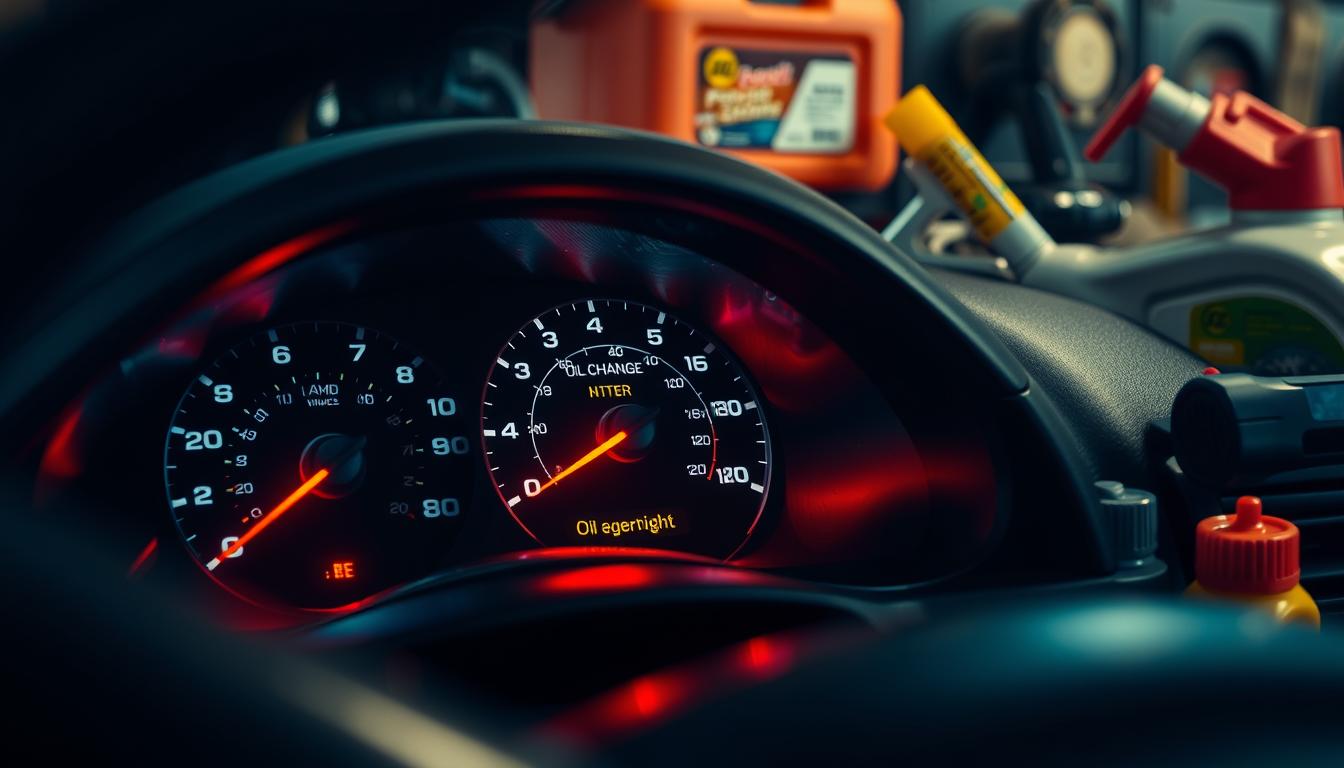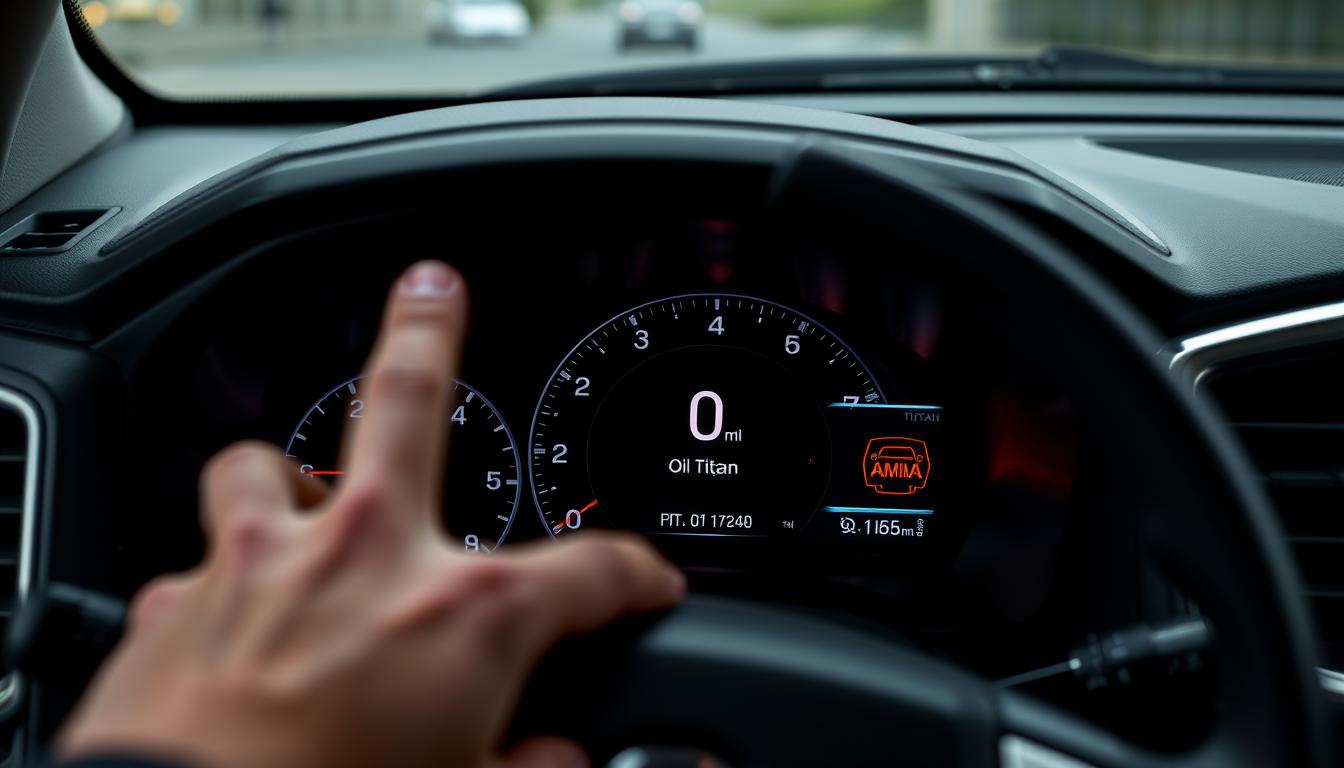Have you ever been driving and suddenly noticed a glow from your dashboard? That’s the check engine light turning on. It might even happen right after an oil change, making you worry. We spend time and money on car maintenance, expecting our cars to be perfect afterward. But seeing that light can make anyone nervous. You might wonder if it means something is really wrong with your engine.
We’re going to look at why this happens. We’ll see how the check engine light relates to oil changes. And we’ll tell you what to do to keep your car running well. You’ll learn about the risks and what steps to take next.
Key Takeaways
- The check engine light may activate after an oil change due to various factors.
- Using the incorrect oil type can lead to engine issues and illuminate that pesky light.
- Modern car diagnostics can sometimes misinterpret sensor readings right after service.
- A loose or forgotten oil cap is an often overlooked trigger for the check engine light.
- Being aware of warning signs can prevent more significant engine damage in the future.
- Regular maintenance checks are essential to avoid unexpected repairs.
- Keeping an eye on fuel economy can signal potential engine troubles that need addressing.
Understanding the Check Engine Light
The check engine light is a key warning on your vehicle. It highlights problems that could affect performance and safety. If you see this light, you must figure out what it means. Neglecting it can cause more trouble and expensive repairs later on.
What Does the Check Engine Light Indicate?
This light might point to many issues within the car’s diagnostics system. It’s often about problems with the engine, emissions system, or other vital parts. Here are common culprits:
- Overheating: This is shown by a high temperature gauge or smoke. It needs quick action.
- Low oil pressure: This could be due to worn-out oil pump or a bad oil change. It might stop your car from working.
- Faulty oxygen sensor: A bad sensor can hurt your car’s gas mileage and increase emissions. You need to replace it fast.
- Malfunctioning gas caps: These stops fuel from evaporating. If cracked, they light up the warning but it’s not a big issue.
- Bad spark plugs: They make starting the car hard or cause uneven acceleration. Change them every 30,000-60,000 miles.
Common Reasons the Check Engine Light Activates
There are many reasons why the check engine light goes on. Fixing issues quickly is key. Knowing common reasons helps you deal with them before they get worse:
- Ignoring small problems can lead to the need for replacing costly parts like the catalytic converter.
- Many wait too long to see a mechanic. In fact, only 36.1% go within a week of the light showing.
- Having a loosely fitted or incorrect oil cap after an oil change can also activate the light. This affects engine power and how much gas you use.
- If your oil filter is clogged or installed wrongly, it may cause odd engine sounds. This is a sign of oil pressure problems.
Common Causes of Check Engine Light After an Oil Change
After changing your oil, your check engine light might turn on. This indicates a problem with your vehicle. Here are the main reasons why this happens.
Loose or Incorrect Oil Fill Cap
A common reason for the check engine light is a loose oil fill cap. If it’s not tight, air and dirt can get in the engine. Make sure the cap is secure after getting an oil change.
Incorrect Oil Type or Viscosity
Using the wrong oil for your car can cause issues. Every engine needs the right oil to work well. If the oil is wrong, it may trigger the check engine light. Regularly check your engine to catch any problems.
Oil Pressure Sensor Malfunction
Sometimes the oil pressure sensor doesn’t work right. This can cause false alarms with the check engine light. It’s important to keep this sensor in good shape for your engine’s health.
Clogged Oil Filter
An oil filter clogged with dirt can block oil flow. This harms your engine and can turn on the check engine light. Fixing this quickly can prevent bigger issues.

| Issue | Impact | Recommended Action |
|---|---|---|
| Loose or Incorrect Oil Fill Cap | Can disrupt pressure, allowing contaminants to enter | Check and secure the cap |
| Incorrect Oil Type or Viscosity | Affects engine performance | Use the manufacturer’s recommended oil |
| Oil Pressure Sensor Malfunction | Leads to inaccurate readings | Replace or repair the sensor |
| Clogged Oil Filter | Hinders oil flow, reducing lubrication | Replace the oil filter regularly |
Do Check Engine Lights Come On For Oil Changes
Understanding how oil changes and engine sensors connect can make car care easier. Oil changes usually have straightforward effects. But, sometimes they might affect how engine sensors work. Noticing how the check engine light relates to this is key for keeping your car running well.
How Oil Changes Affect Engine Sensors
Oil changes can sometimes interrupt engine sensors. For example, low oil might heat up the engine too much. This can turn on the check engine light and cause big problems if ignored. Following your car’s manual for oil changes helps avoid these issues. In addition, improper sealing or installation of the oil filter or drain plug can lead to oil leaking after oil change. This can result in a gradual loss of oil, which may trigger sensors or cause engine performance issues. Regularly checking for leaks after an oil change and following proper procedures can help keep your engine running smoothly.
Make sure to check your oil regularly, especially before long drives. This keeps your engine running smooth and efficient.
Repercussions of Neglecting the Check Engine Light
Ignoring the check engine light can lead to serious engine trouble. Problems causing the light to turn on could get worse. This means your engine won’t run as well and pollution increases. Engine sensors are critical for your car’s smooth operation.
Staying on top of your vehicle’s care, like checking oil and fixing leaks, helps avoid check engine light worries.

Signs That Your Vehicle Needs Immediate Attention
Knowing the warning signs is key to keeping your car running smoothly. The check engine light is one of many signals that your car might need some help. Other early signs include strange engine sounds, oil leaks, and changes in gas mileage. These could point to big problems if not checked early.
Early Warning Signs to Watch For
There are other dashboard lights besides the check engine light. For example, the oil pressure light warns of low oil or poor lubrication. If you see the brake warning light, it means you might have low brake fluid. This can affect how well your car stops. Ignoring transmission or fluid level warnings can lead to major damage or even put you at risk.
How to Interpret Other Warning Lights
Knowing what different warning lights mean can make you a better driver. Each light, like the airbag or temperature light, tells you something important about your car’s health. An airbag light could mean a serious issue with the system, which would be dangerous in a crash. By understanding these alerts, you can keep safe and extend your vehicle’s life.








